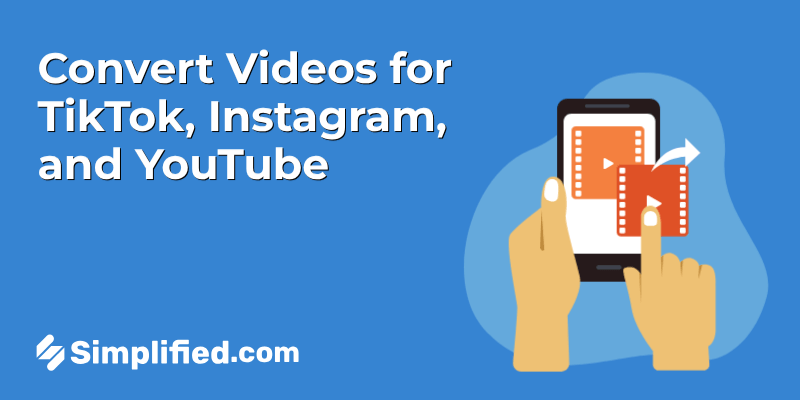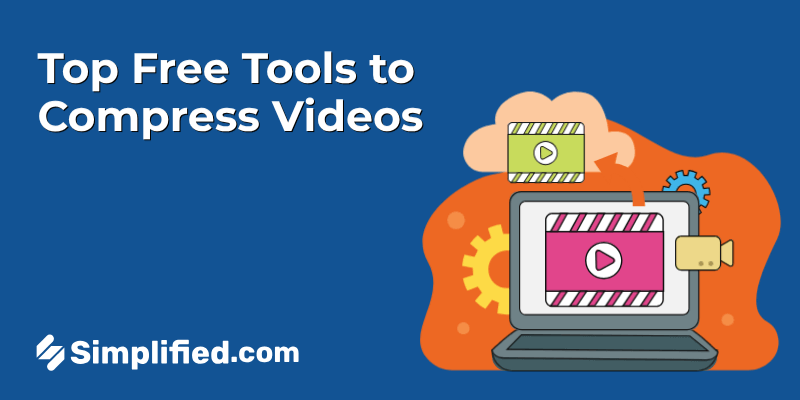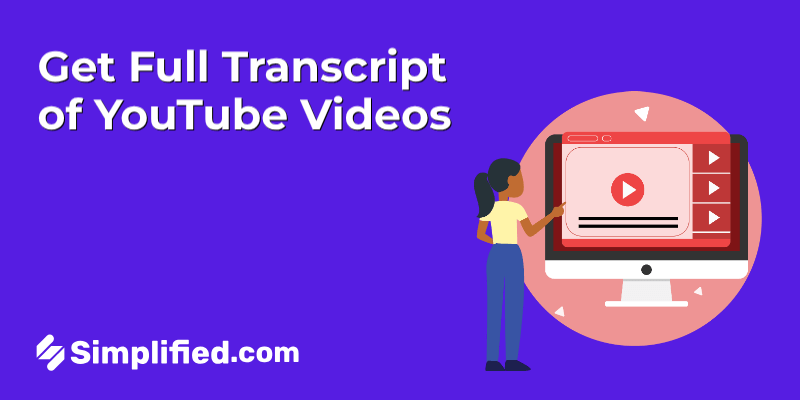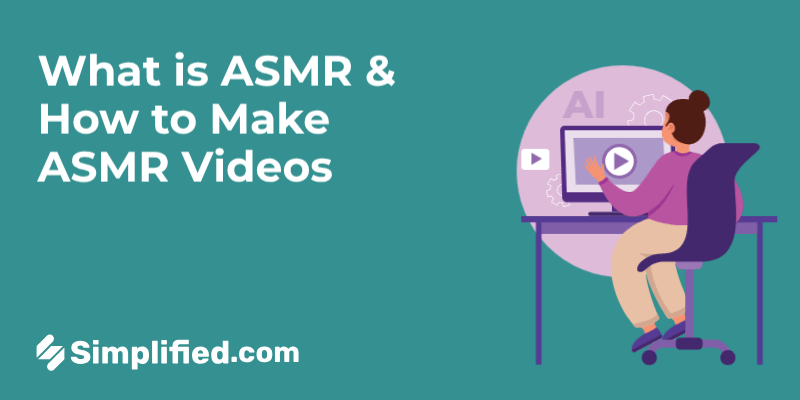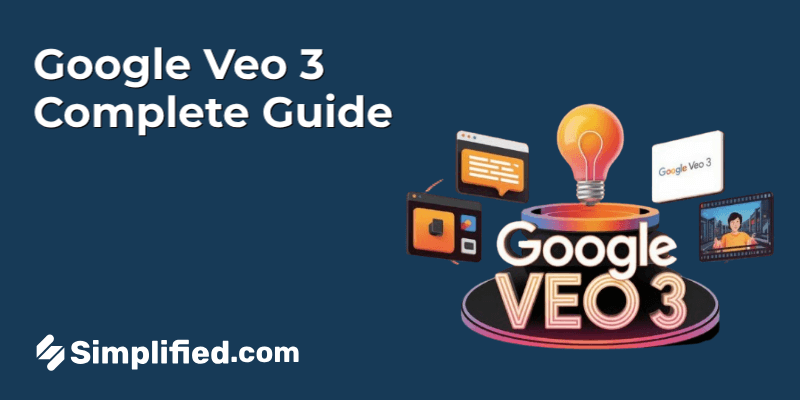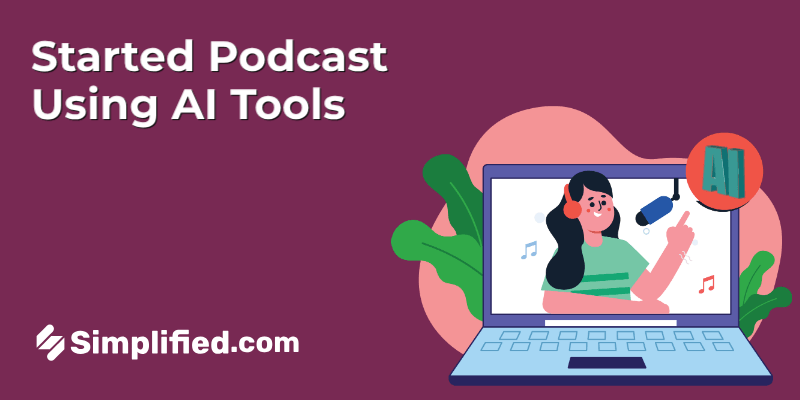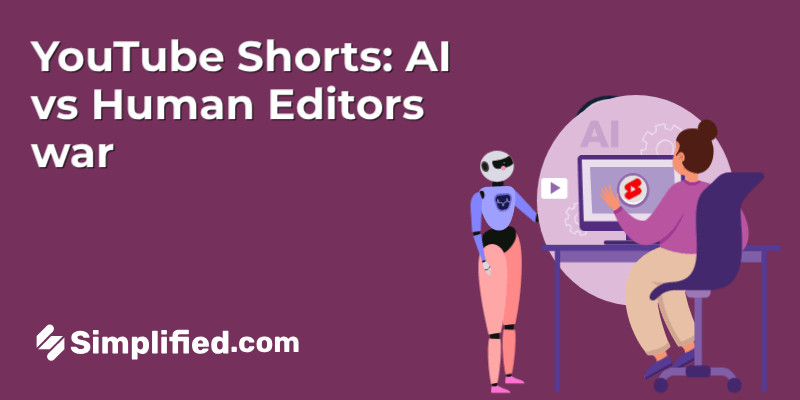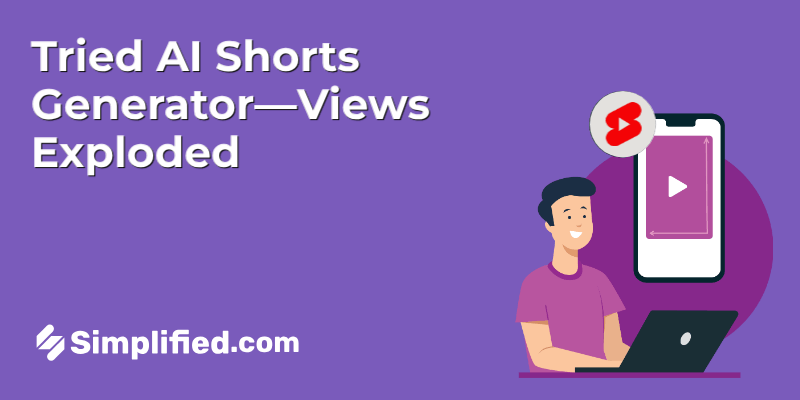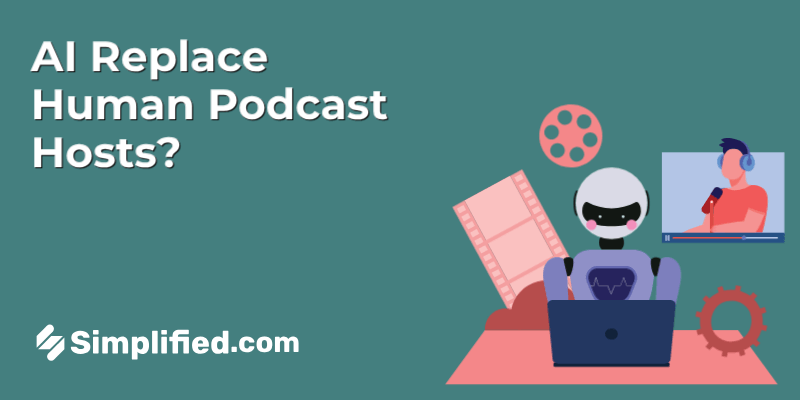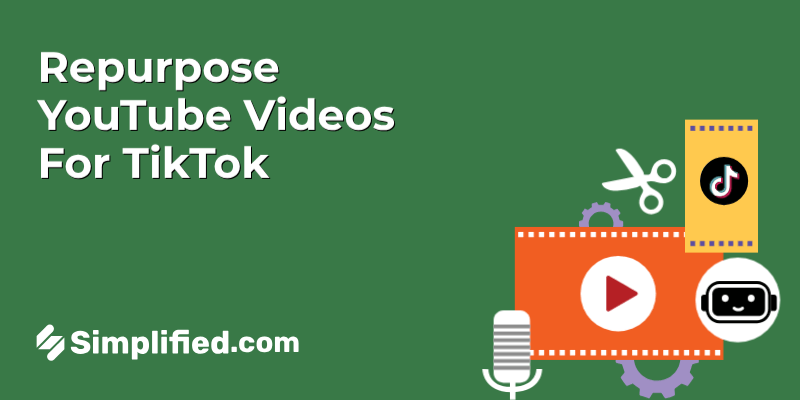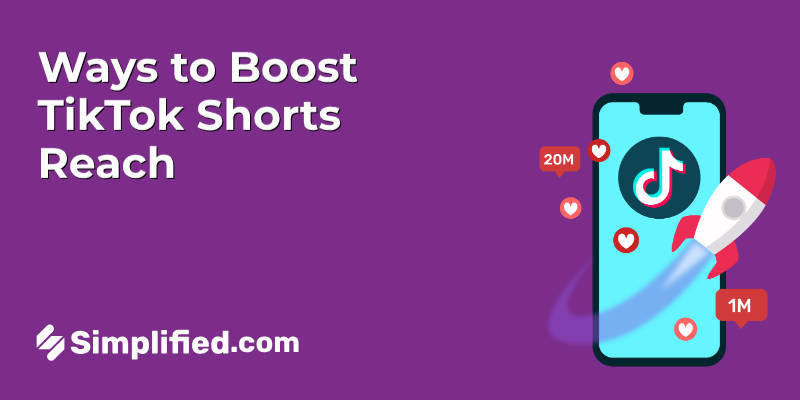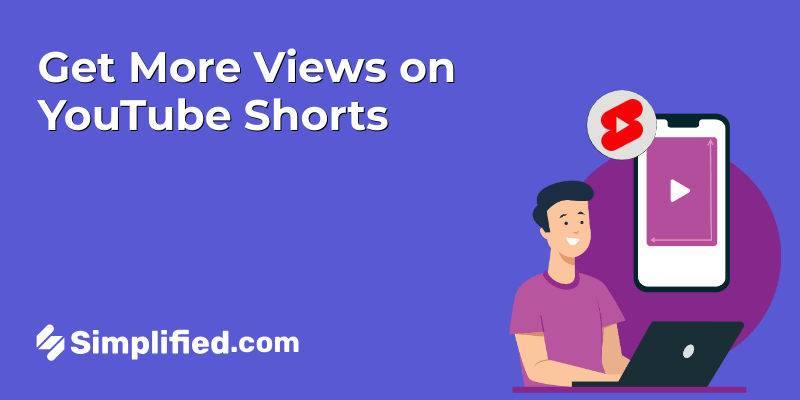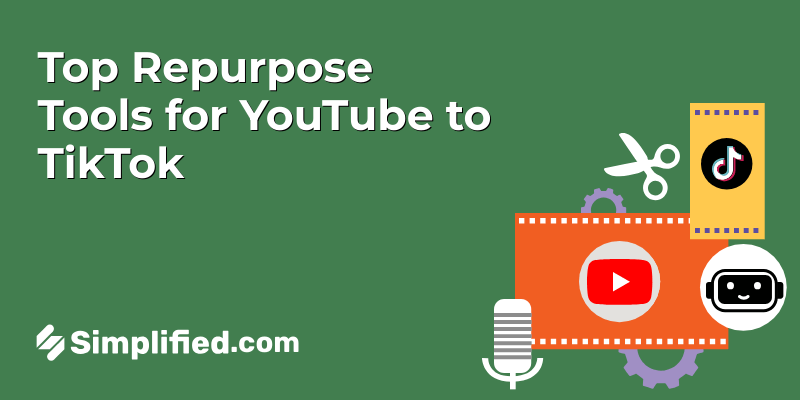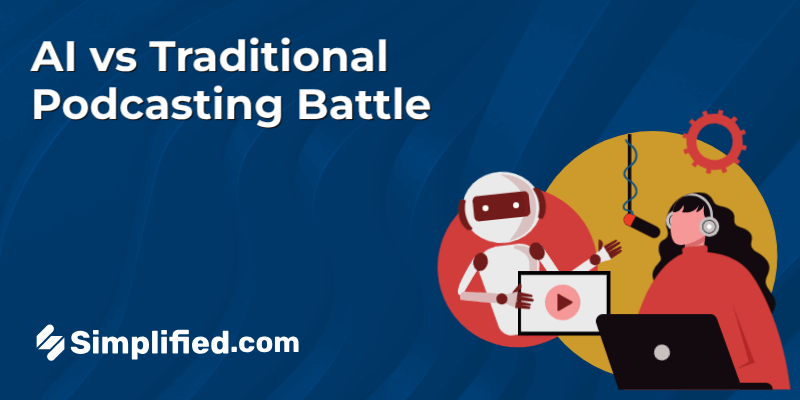
Podcasting has become an immensely popular medium for sharing ideas, stories, and information with a global audience. Traditional podcasting, involving human creativity and labor, has been the standard approach for many years. However, with advancements in technology, AI-driven podcast production is emerging as a viable alternative, promising efficiencies and innovative possibilities.
AI-driven podcast production employs AI algorithms to generate, edit, and produce podcasts with minimal human intervention. These AI tools can create podcasts from scratch, enhance audio quality, and automate various production processes. As AI technology continues to evolve, it offers unique benefits that challenge the conventional methods of traditional podcasting.
The purpose of this article is to compare AI-driven podcast production with traditional methods. By analyzing factors such as production time, cost, content quality, and audience reception, we aim to evaluate the advantages and drawbacks of each approach. This comparison will help podcasters make informed decisions about which method aligns best with their goals and resources.
Production Time: Who Holds the Speed Card?
AI-Powered Tools in Podcast Production
In the race to create high-quality podcasts quickly and efficiently, AI-powered tools are changing the game. From scripting to post-production, these advanced technologies offer a range of capabilities that accelerate the podcast creation process. Automated transcription, voice modulation, sound editing, and even content generation can now be handled at impressive speed with the help of AI.
Traditional Methods: Human Labor and Potential Delays
In contrast, traditional podcast production relies heavily on human labor. This includes planning, writing, recording, editing, and marketing, all of which take considerable time and effort. Human errors, scheduling conflicts, and subjective decision-making can lead to potential delays, making the traditional process lengthier and often more stressful.
Examples of Time Savings with AI Podcast Generators
To illustrate the advantage of AI in terms of production time, consider the following examples:
- Script Writing: What might take a human several hours to outline and write, an AI podcast generator can achieve in a matter of minutes with suggestions and even full scripts.
- Editing: AI can automatically identify and correct errors, balance sound levels, and remove background noise, drastically reducing the time needed for post-production editing.
- Transcriptions: Generating accurate episode transcriptions manually can be a time-consuming process. AI automatically transcribes with impressive accuracy in mere moments.
In the world of podcast creation, speed is valuable. AI tools clearly hold the advantage when it comes to rapid production, enabling creators to produce content at an unprecedented pace without sacrificing quality.
Note: Learn 5 Tips for Writing a Killer Podcast Description that hooks listeners, highlights your show’s value, and helps you stand out on streaming platforms.
Cost Comparison: Budget-Friendly or Premium Quality?
When deciding between AI-driven podcast production and traditional methods, cost is a crucial factor that can significantly impact your choice. It’s essential to compare the cost implications of both approaches to make an informed decision.
Cost Implications of AI Podcast Creation
AI podcast creation tools like AI podcast maker offer a more budget-friendly option for those starting out or looking to reduce expenses. These tools can handle various aspects of production, such as:
- Script generation
- Voice synthesis
- Editing
- Mixing
By automating these tasks, AI tools dramatically reduce the need for expensive equipment and personnel, leading to substantial savings. Additionally, the subscription models for these AI services often come with different pricing tiers, allowing users to choose options that best fit their budget.
Traditional Podcast Production Costs
Traditional podcast production, on the other hand, requires a more significant investment in both equipment and personnel. Key costs include:
- High-quality microphones and headphones
- Soundproof studio space
- Audio editing software
- Professional editors and sound engineers
Moreover, hiring experienced personnel to handle production aspects, such as editing and mixing, can quickly add up, making traditional podcasting more expensive than AI-driven alternatives.
Balancing Cost and Quality
While cost is an essential factor, the quality of the podcast shouldn’t be overlooked. It’s crucial to balance cost and quality:
- For new podcasters or those with tight budgets, AI podcast creation tools provide a cost-effective way to produce content without compromising too much on quality.
- For established podcasters or those seeking a premium-quality production, traditional methods may offer superior sound quality and a more personalized touch, albeit at a higher cost.
By understanding the cost implications of both AI-driven and traditional podcast production methods, you can make a savvy decision that aligns with your priorities and budget constraints.
🎁Bonus: AI Podcast Clips Get 5x More Views and Shares—Here’s How
Content Quality: Craftsmanship vs Automation
When assessing the quality of content produced by AI podcast makers and comparing it to traditional methods, there are several key aspects to consider, including the personal touch, authenticity, and real-world examples from both approaches.
Quality of Content Produced by AI Podcast Makers
AI podcast creators are efficient tools that can generate content quickly and consistently. These platforms utilize complex algorithms and vast libraries of information to produce scripts that are coherent and contextually relevant. However, the quality of AI-generated content can vary based on the level of customization and oversight provided by the user. Here are some of the advantages and challenges:
Advantages:
- Consistency in quality and delivery
- Ability to process large amounts of data and provide factual information
- Cost-effective for creating a large volume of content
Challenges:
- May lack the nuanced understanding and emotional depth that humans can provide
- Can sometimes produce content that feels mechanical or less engaging
💡Bonus: Struggling to name your podcast? This list of 100+ Captivating Podcast Name Ideas to Inspire Your Next Show
Traditional Methods: Personal Touch and Authenticity
Traditional podcast production methods, on the other hand, rely on human creativity, experience, and insight. A key advantage of this approach is the personal touch and authenticity that a human podcaster brings to the table. The unique style, voice, and personality of the podcaster are elements that resonate well with the audience. Here are some points to consider:
Advantages:
- Personal connection with the audience through relatable storytelling and emotional engagement
- Flexibility in adjusting content flow based on nuanced audience feedback
- Higher level of detail and originality in content creation
Challenges:
- Time-consuming and potentially more expensive process
- Inconsistency in content quality depending on the podcaster’s creative state
Real-World Examples of Content Quality from Both Approaches
Consider two popular method: one created using AI for podcast and another through traditional methods. The AI podcast might provide a wealth of accurate information efficiently but may lack the dynamic interaction and humor that listeners enjoy.
In contrast, a traditional podcast, while potentially slower to produce, could feature engaging storytelling, interviews, and spontaneous moments that audiences find memorable and authentic.
Audience Reception: Automated Charm or Traditional Credibility?
In the world of podcasting, understanding audience reception is pivotal. With the rise of AI-generated content, it’s crucial to delve into how listeners respond to both AI-driven and traditional podcasts. Let’s explore the dynamics of audience engagement and examine whether the automated charm of AI can match or even surpass the traditional credibility that seasoned podcasters hold.
Audience Engagement with AI-Generated Podcasts
AI-generated podcasts, crafted through advanced algorithms, offer a unique experience. The appeal lies in their ability to deliver content consistently, without the constraints of human limitations like time and energy. These podcasts can quickly gather and analyze vast amounts of data to tailor content that resonates with specific audience niches.
Listeners might find the precision and variety offered by AI-generated podcasts intriguing, as these tools can potentially cover a wider range of topics with a high degree of accuracy. However, there’s an ongoing debate regarding the lack of a human touch. Some users appreciate the efficiency, while others miss the personal connection found in traditional podcasts.
Traditional Podcast Audience Loyalty
Traditional podcasts have been around for years, building loyal audiences through the consistent delivery of authentic content. Here, the podcaster’s personality plays a crucial role in audience engagement. The rapport built over time, through personal stories and consistent interaction, fosters a sense of loyalty that AI might find challenging to replicate.
Furthermore, many listeners appreciate the human element in traditional podcasts. The chance to hear insights directly from an individual, complete with personal nuances and emotions, can be profoundly engaging. It’s this unique connection that often keeps listeners coming back for more.
Factors Influencing Audience Preference
Several factors influence whether a listener prefers AI-generated or traditional podcasts. These include:
- Content Quality: While AI can generate high-quality content rapidly, it may lack the depth of expertise or personality-driven insights inherent in traditional podcasts.
- Consistency and Frequency: AI-generated content can be produced at a faster rate and without breaks, which might appeal to listeners who prefer a steady stream of new content.
- Personal Connection: Traditional podcasts offer a personal touch and the podcaster’s unique voice and experiences, which can lead to deeper audience engagement.
- Variety and Innovation: AI has the capability to quickly adapt to new trends and topics, providing a diverse range of content that might not be as easily accomplished by traditional podcasters.
- Trust and Credibility: Long-standing podcasters can build significant trust with their listeners, something AI-generated content is still striving to achieve.
Bonus: AI Clips vs Traditional Video Editing: What’s the Difference?
Use Cases: When to Use AI or Go Traditional
Choosing between AI and traditional podcasting depends on your goals, audience, and content style. Each approach serves different purposes effectively.
When to Use AI:
AI-powered tools are ideal for content that needs to be produced quickly, consistently, and at scale. They work especially well for:
- Daily Summaries or News Briefs:
If you publish quick updates on trending topics or daily recaps, AI tools can help script, voice, and edit episodes rapidly—perfect for time-sensitive content. - Branded Content or Company Updates:
AI can efficiently produce clean, professional-sounding episodes that share announcements, explain product features, or support marketing efforts—great for internal comms or customer-facing content. - Repurposing Existing Content (Blogs, Videos):
Turn blog posts, YouTube scripts, or whitepapers into podcast episodes using AI-generated narration. This helps expand content reach without creating everything from scratch.
When to Go Traditional:
Human hosts bring personality, emotion, and spontaneity—crucial for certain types of content. Traditional podcasting is better suited for:
- Niche or Sensitive Discussions:
Topics that require cultural sensitivity, personal experience, or in-depth commentary are better handled by humans who can offer perspective, empathy, and context. - In-Depth Interviews:
Conversational nuance, follow-up questions, and genuine rapport with guests are difficult to replicate with AI. For meaningful dialogue, human interaction is key. - Storytelling and Narrative-Driven Shows:
Podcasts that rely on emotional pacing, voice acting, and layered storytelling benefit from a human touch. The ability to express tone shifts and build tension makes all the difference.
Interested in AI-driven content creation? Check out our guide on how AI writing tools can enhance your blogging process.
Advantages of AI in Podcasting: A New Era of Efficiency
As podcasting grows, AI tools are reshaping how content is planned, recorded, edited, and distributed. From faster turnaround times to consistent production quality, the benefits of AI are making podcast creation more accessible and scalable for solo creators, brands, and production teams.
1. Faster Production with Less Manual Work
AI automates repetitive and time-consuming tasks in podcast production.
- Transcriptions in Real Time
AI-powered tools can instantly convert audio into text—helpful for subtitles, searchable content, and accessibility. - Editing Support
Tools can detect filler words, long pauses, and noise, allowing for faster clean-up during post-production. - Auto-Generated Content
Some AI platforms generate show notes, summaries, and title suggestions based on your recording—helping creators save hours of manual work.
2. Consistency and Content Scaling
AI helps maintain quality across episodes and supports higher output without sacrificing production standards.
- Uniform Audio Quality
AI applies consistent noise reduction, leveling, and processing across episodes—even when recorded in different environments. - Scalability for Brands & Creators
Whether you’re managing one podcast or multiple branded series, AI makes it possible to maintain a steady production cadence at scale.
3. Integration with Other AI Tools
AI podcast tools can be combined with other AI solutions to improve the overall listener experience.
- Content Personalization
AI systems can tailor episode recommendations to listeners based on their interests and listening habits, increasing engagement. - Analytics & Listener Insights
AI can analyze listener behavior, like skip rates or engagement peaks, to help creators refine future content. - Voice Cloning & Synthesis
Some tools offer synthetic voices that can mimic real hosts or provide multilingual versions of episodes for global reach.
Challenges and Limitations of AI in Podcasting
While AI has brought speed and consistency to podcast production, it also comes with some trade-offs. These limitations are worth considering before relying entirely on automated solutions.
1. Limited Emotional Depth and Improvisation
AI-generated voices, while improving, still lack the subtle nuances, emotion, and spontaneity that human voices provide. Listeners often respond to tone, timing, and energy shifts — elements that AI can replicate only partially.
- AI can’t improvise or react naturally during unscripted conversations.
- It may miss the emotional cues or cultural context that humans pick up intuitively.
2. Automation vs. Authenticity
AI significantly reduces human effort, but that convenience can come at the cost of authenticity.
- Human Time Investment: Traditional podcasting requires planning, scripting, voice recording, and editing — a time-consuming but personal process.
- AI’s Limitation: Automation handles tasks quickly but lacks a personal voice, making the content sound generic or robotic if not fine-tuned.
3. Ethical Concerns
The rise of AI tools introduces new ethical questions in the podcasting space.
- Voice Cloning: Synthetic voices created without consent could lead to misuse or impersonation.
- Misinformation Risks: AI tools may generate content based on inaccurate data or lack the ability to fact-check nuance or context.
- Transparency: Audiences may not always know when they’re listening to AI-generated content, raising concerns about disclosure and trust.
The Future of Podcasting: Hybrid Models?
Instead of viewing AI and traditional methods as opposites, many creators are starting to use both in combination. A hybrid approach offers the best of both worlds: speed and precision from AI, plus the personality and nuance of human creativity.
1. AI as a Creative Assistant, Not a Replacement
AI tools can be used to support — rather than replace — the human side of podcasting.
- Script Assistance: Use AI to create episode outlines or suggest talking points, which the host can then adapt with their tone and storytelling.
- Auto-Editing: AI can handle routine clean-up tasks like removing long pauses, adjusting volume, or deleting filler words.
- Voice Enhancement: AI can improve audio quality without needing expensive equipment, making small creators sound professional.
2. Human Oversight is Still Critical
Even with AI support, human involvement is necessary to:
- Inject emotion and pacing into the delivery.
- Ensure content accuracy and context.
- Maintain brand voice and audience connection.
3. Personalized Innovation on the Horizon
Hybrid models may also bring in:
- Real-Time Translations to reach global audiences.
- AI Co-Hosts for educational or quiz-based formats.
- Dynamic Content Personalization based on listening behavior.
Conclusion: Making the Choice – AI or Traditional?
As we reach the conclusion of our comparison between AI-driven podcast production and traditional methods, it’s essential to recap the key points and considerations for podcasters. We have explored various factors such as production time, cost, content quality, and audience reception to understand the advantages and drawbacks of each approach.
- Production Time: Using AI for podcast production can dramatically reduce turnaround with automated editing, scripting, and even voice synthesis. Traditional methods may take longer but provide a more hands-on creative process.
- Cost: AI tools, while requiring an initial investment, can be cost-effective in the long run by reducing the need for extensive human resources. Traditional methods, on the other hand, may involve ongoing costs related to staff and equipment.
- Content Quality: Both approaches can produce high-quality content, but AI-driven podcasts benefit from advanced editing and consistency. Traditional methods allow for greater creativity and adaptability to unique styles.
- Audience Reception: The reception of AI-generated content versus traditionally produced content can vary based on the audience’s preferences and expectations. Some listeners may appreciate the precision of AI, while others may value the authenticity of human input.
There’s no single right answer. Many podcasters are now blending both worlds—using AI for podcast tasks like editing or transcription, while keeping storytelling and interviews human-led. Testing different tools and workflows can help you land on a process that fits.
I encourage podcasters to explore both methods, as finding the right balance can lead to a more successful and engaging podcast. Whether you opt for AI tools, traditional techniques, or a combination of both, each path has its benefits and challenges.




